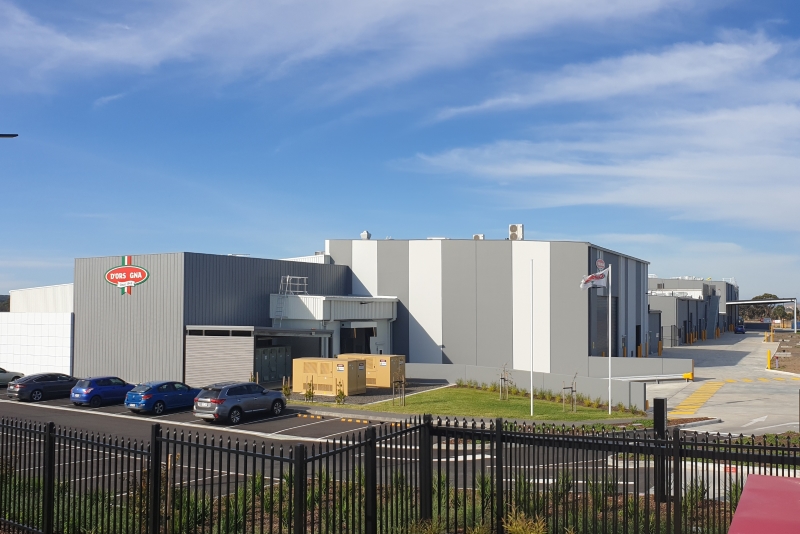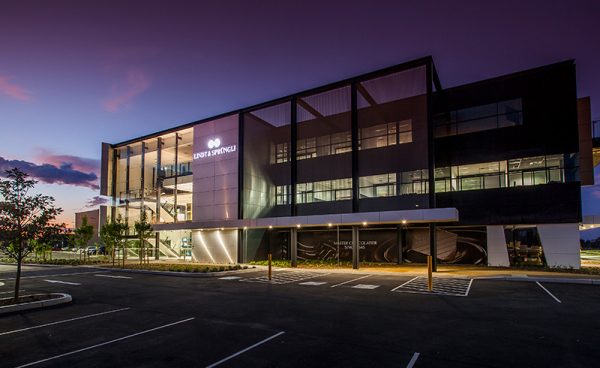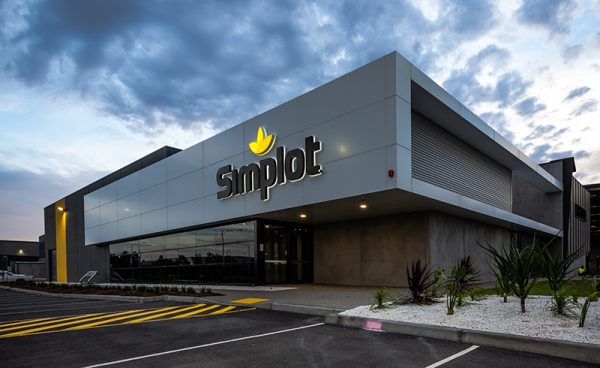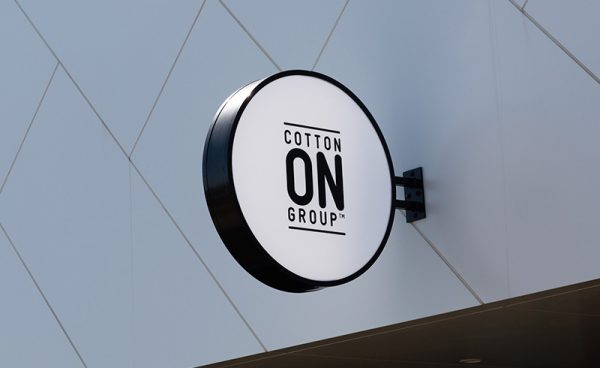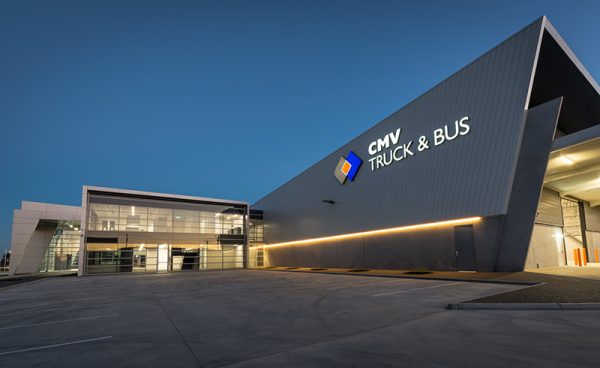Category
D’Orsogna
Mickleham, VIC
D’Orsogna Smallgoods is the kind of success story which we can thank for our diverse and exciting multicultural experience. For more than 70 years, the proudly Australian-owned company has blended the best of Australian and Italian traditions to create and supply a unique and innovative range of hand-crafted continental products to the Australian market.
From humble beginnings in a one-man butcher shop in Stone Street, West Perth, D’Orsogna Smallgoods has grown into a national market leader, supplying Australia with high quality hams, bacons, cured and roast meats, salamis and sticks all created in line with its three guiding principles: Taste, quality and value.
In 2016, D’Orsogna commissioned Qanstruct to build a new, $35 million production facility in the Merrifield Business Park at Mickelham in Melbourne’s north, to service the eastern states of Australia and grow its footprint in these critical markets.
The new 10,585m2 plant caters for all stages of production, from cooking, smoking and cooling, to storing, slicing and packaging, all meticulously detailed in a two-year design phase liaising closely with Qanstruct.
It includes temperature-controlled food processing halls complemented by freezers and storage for chemicals and dangerous goods and staff amenities including offices and meeting rooms, all set on a compact site in the new industrial estate.
Hygiene production zones incorporate a low-care room where flavours are added to raw meat products, high-care, high-risk rooms for cooking and smoking meats, and high-care, low risk rooms for slicing and packaging. Column-free construction provides complete flexibility for equipment location and configuration, maximising efficiency. Separate staff amenities are provided for each area, to prevent cross contamination.
The construction required extensive coordination between Qanstruct and a number of specialist services including specific electrical and mechanical services, a steam generation plant, compressed air, nitrogen, carbon dioxide, chilled water and reticulated hot and cold-water services. This complexity, together with a number of significant changes during the building phase, necessitated an ongoing process of review, reengineering, redocumentation and implementation throughout the construction period.
Environmental impact has been reduced with the use of LED lighting throughout, the use of non-potable mains water for cooling, and extensive emissions modelling in conjunction with the EPA to ensure smoke output does not impact on nearby residents.
The new facility was finished in 2018 and will produce more than 14 million kilograms of product each year to service the eastern states of Australia. This almost doubles the company’s production capacity and provides the efficiencies it needs to achieve its aim of becoming the ‘lowest cost producer’ in its category.

